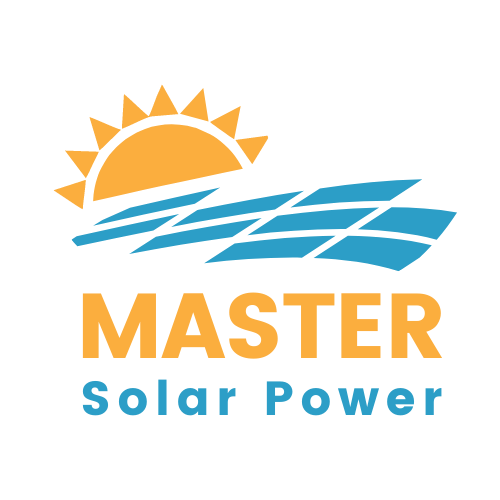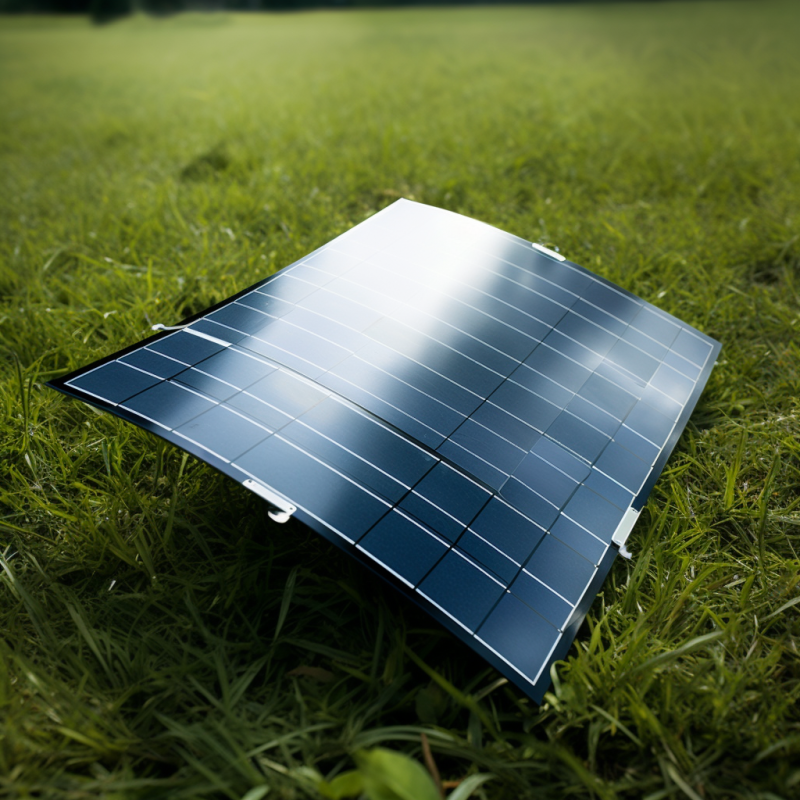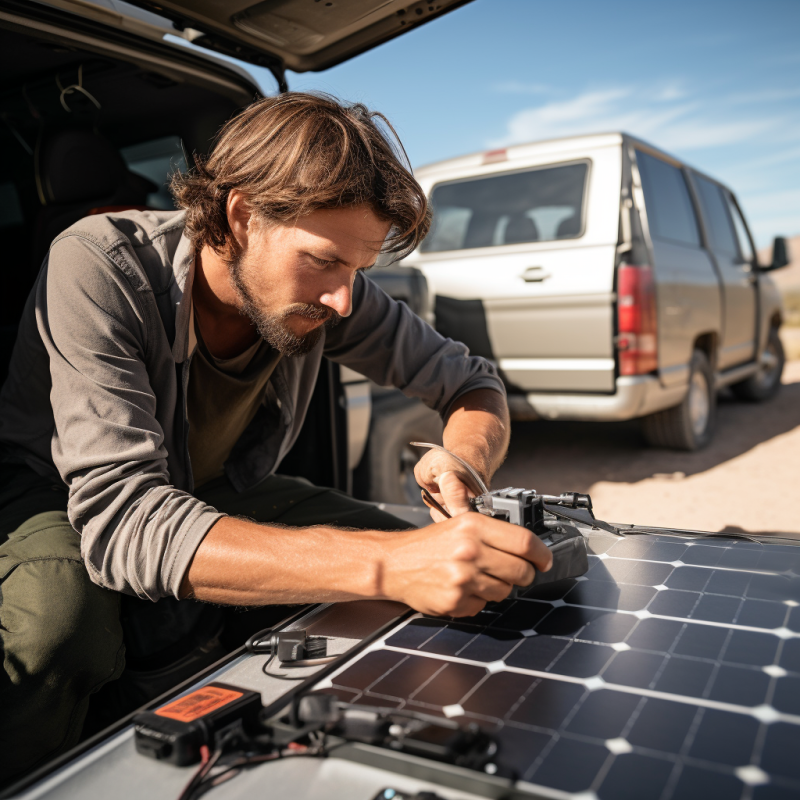Embracing an eco-friendly way of life is more important now than ever, and this ethos is finding its way into the world of campervan living.
Utilizing solar power for your campervan is a compelling choice that offers a sustainable answer to energy requirements and complements the autonomous spirit inherent in the campervan lifestyle.
This article will illuminate the many advantages that can be reaped from integrating a solar power system into your campervan.
We’ll navigate through financial benefits and environmental preservation, demonstrating how this green energy alternative can revolutionize your nomadic living experience.
Whether you’re a veteran van-lifer or a novice just dipping your toes into this lifestyle, this guide provides insights into the practicality and myriad benefits of adopting solar power for your campervan.
In this post, we'll discuss:
Understanding Campervan Solar Power Systems
Solar power, in its simplest definition, is energy harnessed from the sun.
This renewable energy source has been used in various ways for centuries, but only in recent years have we started to tap into its full potential.
With the rapid development of technology, we can now convert sunlight directly into electricity using solar panels – a game-changer for many industries, including the world of campervan living.

In a campervan, a solar power system typically comprises solar panels, a charge controller, a battery bank, and an inverter.
The solar panels collect sunlight and transform it into direct current (DC) electricity.
The charge controller regulates the power flowing from the panels to the battery bank, preventing overcharging.
The battery bank stores this electricity for later use.
Finally, the inverter converts the stored DC power into alternating current (AC) power, which runs most appliances and devices.
Within the confines of a campervan, the solar power system is an ingenious assembly of several components, each performing a distinctive role.
These include solar panels, a charge controller, a battery bank, and an inverter.
Solar Panels
The process begins with the solar panels strategically positioned to absorb sunlight.
These panels are composed of photovoltaic cells that initiate the energy conversion process.
The absorbed sunlight is transformed into direct current (DC) electricity, marking the first step in harnessing solar power.
Charge Controller
Next in line is the charge controller, a critical component that oversees power transfer from the solar panels to the battery bank.
Its primary role is to regulate the flow of electricity, ensuring that the batteries are not overcharged, which can lead to reduced efficiency or damage.
Battery Bank
The battery bank serves as the storage unit within the system.
It holds the converted DC electricity, storing it for future use.
This feature allows users to have a steady supply of power even during periods of low sunlight, such as during nightfall or on cloudy days.
Inverter
The final piece of the puzzle is the inverter.
This device takes the stored DC power and converts it into alternating current (AC) power.
AC power is the standard form of electricity used by most household appliances and devices.
Thus, the inverter ensures that the solar energy harnessed can be effectively utilized, powering everything from your lights and kitchen appliances to your devices and heating system in your campervan.
Understanding this dynamic process provides a deeper appreciation of how solar power systems work in campervans, setting the stage for exploring their many benefits in the following sections.
Selecting the right type depends on your specific needs, such as how much power you need, your budget, and the amount of space available on your campervan roof.
Understanding how solar power works and the different options available is the first step towards harnessing the advantages of this renewable energy source for your campervan lifestyle.
In the following sections, we will discuss these benefits in detail and provide practical tips on choosing and installing a solar power system in your campervan.
The Benefits of a Solar Power System in a Campervan
Beyond its eco-friendly credentials, solar power offers many benefits for campervan enthusiasts.
It’s a game-changer that can revolutionize your on-the-road lifestyle in ways you might not have imagined.
Let’s explore some key advantages of integrating a solar power system into your campervan.

Economic Savings
One of the most tangible benefits of solar power is the potential for significant economic savings.
While the initial setup cost may seem high, the long-term savings are substantial.
Traditional power sources, such as generators or grid power, come with ongoing costs—fuel for generators and fees for campsite hookups or charging stations.
These expenses increase over time, especially if you live full-time in your campervan or travel extensively.
In contrast, sunlight is free and unlimited.
Once your solar power system is installed, you will generate your electricity at no additional cost.
Over time, the system will pay for itself through savings on fuel and power charges, making it an excellent investment for the future.
Environmental Impact
Opting for solar power significantly reduces your carbon footprint, making it an excellent choice for environmentally conscious campervan owners. Traditional power sources, especially generators, emit greenhouse gases contributing to global warming.
By using solar power, you’re reducing reliance on these harmful energy sources and playing your part in preserving our planet.
Moreover, solar panels are silent operators, unlike noisy generators. This means you can enjoy the tranquility of your surroundings without disturbing wildlife or fellow campers—a win-win for both you and the environment.
Energy Independence
With a solar power system, you gain significant energy independence.
You’re no longer tied to campsites with electrical hookups or dependent on fuel supplies for your generator.
Your power supply is as reliable as the sunrise, allowing you to explore off-grid locations with the confidence that you’ll have the power you need.
This independence also translates into peace of mind.
You won’t have to worry about running out of fuel or finding a power source in remote areas.
You will have a consistent electricity supply as long as there’s sunlight.
Increased Lifespan of Vehicle Battery
Using solar power can help prolong the lifespan of your vehicle battery.
In traditional setups, the vehicle battery is often used for powering appliances when the engine is off.
However, regular deep discharging can shorten a battery’s life.
On the other hand, a solar power system generally includes a separate battery bank for storing solar-generated electricity.
This setup means you’re not drawing power from the vehicle battery when stationary, thus preserving its lifespan.
Easy Maintenance
Solar power systems require minimal maintenance compared to generators. There are no moving parts that can wear out, and they don’t need fuel, oil changes, or regular servicing.
You’ll need to occasionally clean the panels to ensure they’re working efficiently.
This low-maintenance aspect saves you time, money, and potential headaches, adding to the overall appeal of solar power.
In conclusion, a solar power system in a campervan offers multiple benefits that can enhance your travel experience.
From economic savings and environmental conservation to energy independence and easy maintenance, solar power is an innovative and sustainable choice for the modern campervan owner.
The initial investment and setup might seem daunting, but the long-term advantages make it worthwhile.
As we move towards a more eco-conscious world, harnessing the sun’s power for your campervan is a step in the right direction.

How to Choose the Right Solar Power System for Your Campervan
Solar power is one of the most reliable and sustainable energy sources today.
It’s increasingly being adopted by many, including campervan owners who want to enjoy the freedom of the open road without worrying about access to electricity.
However, selecting the right solar power system for your campervan may be more complex.
This section will guide you through the process.
Understanding Your Energy Usage
Installing a solar power system in your campervan begins with clearly understanding your energy consumption.
This initial step is crucial in choosing a solar power system that efficiently serves your needs.
All the electrical appliances you plan to use in your campervan, such as lights, a fridge, a laptop, and possibly an air conditioner, consume varying amounts of energy, measured in watt-hours daily.
For example, while your laptop might use around 50 watt-hours daily, your refrigerator could require as much as 600wH.
It’s noteworthy to understand that different versions of the same appliance might have other energy demands, so it’s advisable to refer to the manufacturer’s specifications for precise information.
Once you’ve listed all the appliances you’ll be using, calculate their collective energy consumption by adding up the watt-hours of each device.
This will provide a reliable estimate of your daily energy demand.
Armed with this vital data, you can determine the suitable size and capacity of the solar power system needed for your campervan.
By mastering your energy usage, you set the stage for a smooth transition to solar power, ensuring your campervan journeys are pleasurable and eco-friendly.
Types of Campervan Solar Panels
If you plan to harness the sun’s power for your campervan adventures, understanding the different types of solar panels available is essential.
After determining your energy requirements, you can delve into the world of solar panels, which primarily consists of three categories: monocrystalline, polycrystalline, and thin-film.
Monocrystalline Solar Panels
Monocrystalline panels are a popular choice due to their high efficiency.
They are composed of single-crystal silicon, allowing maximum electron flow and producing greater electricity.
However, this high efficiency comes with a higher cost.
These panels are generally the most expensive of the three types, but they offer the best performance if budget isn’t a constraint.
Polycrystalline Solar Panels
Polycrystalline panels, on the other hand, are a more economical option.
While they are less efficient than their monocrystalline counterparts, they are more affordable, making them a viable choice for those looking to balance cost and performance.
These panels are made from multiple silicon fragments melted together, which results in a lower efficiency rate.
Thin-film Solar Panels
Lastly, thin-film panels are the least efficient but also the cheapest.
They are made by placing one or more films of photovoltaic material (such as silicon, cadmium, or copper) onto a substrate.
Their key advantage is flexibility, which makes them perfect for installation on curved surfaces like a campervan roof.
This feature can simplify the installation process, making them an attractive option for DIY enthusiasts.
Choosing the correct type of solar panel for your campervan depends on various factors, including your budget, energy needs, and the physical characteristics of your van.
It’s essential to weigh these factors against each panel’s efficiency, cost, and installation requirements before deciding.
Sizing Your Campervan Solar System
When harnessing solar power for your campervan, you must first size your solar system.
This process is crucial in ensuring you have enough ability to meet your energy needs on the road. It involves determining your required solar panels and your battery bank’s capacity.

To start, calculate the number of solar panels necessary for your campervan.
This is done by dividing your total daily energy consumption, measured in watt-hours, by the average number of sunlight hours you expect to receive per day in the areas you plan to travel.
This calculation will provide you with the required solar panel output in watts.
Remember that the amount of sunlight varies depending on the location and time of year, so it’s essential to account for this variability in your calculations.
The next step in sizing your solar system involves determining your battery bank’s capacity.
The battery bank serves as a storage system for the energy generated by your solar panels.
It’s imperative to have sufficient battery capacity to store energy for at least a few days, especially during periods of poor sunlight or when parked in shaded areas.
Battery capacity is expressed in ampere-hours (Ah).
Divide your daily energy consumption by the battery voltage to calculate the necessary power.
For most campervans, the standard battery voltage is 12V.
This will give you an estimate of the battery capacity needed to support your energy requirements.
Choosing the Right Components
Selecting appropriate components is crucial when setting up a solar power system in your campervan.
Not only will this ensure the system’s efficient operation, but it also guarantees longevity and safety.
These components include a charge controller, an inverter, and wiring.
The charge controller is a vital part of your solar power system.
Its primary function is to regulate the voltage and current flowing from the solar panels to the battery.
Doing so prevents the battery from overcharging, which could lead to damage and a reduction in lifespan.
An efficiently functioning charge controller will keep your battery in optimal condition and enhance the overall performance of your solar power system.
The inverter converts the Direct Current (DC) generated by the solar panels and stored in the battery into Alternating Current (AC).
Most appliances within your campervan, such as your refrigerator, laptop, or air conditioner, utilize AC power.
Therefore, an inverter is necessary to operate these appliances, making them indispensable to your solar power system.
Lastly, the wiring serves as the connective tissue of your solar power system.
It links all the components together, facilitating the flow of electricity from the solar panels, through the charge controller and inverter, to your appliances.
The choice of wire size is crucial here, as it must be capable of safely handling the current produced by your solar system. Using the correct wire size will prevent overheating and potential fire hazards.
Professional Installation or DIY?
Choosing between professional installation and a do-it-yourself (DIY) approach for your campervan’s solar power system is a decision that should be made after careful consideration.
Your familiarity with electrical systems, budget constraints, and your value on safety often influence this choice.

Opting for a professional installation can provide peace of mind.
Professionals have the expertise to ensure the solar power system is installed correctly, safely, and efficiently.
Their experience allows them to foresee and mitigate potential issues before they become problematic.
They are also well-versed in the latest technological advancements and can recommend the most suitable solar power system.
However, this option is expensive.
The expenses include the cost of the solar power system itself and labor and service fees.
On the other hand, a DIY installation can be a more economical choice.
It provides an opportunity to save money by eliminating labor costs.
Moreover, it can be a rewarding experience, allowing you to gain new skills and a deeper understanding of how your solar power system works.
However, this approach requires a good grasp of electrical systems and a strict adherence to safety protocols.
It’s important to note that incorrectly installing a solar power system can lead to potential hazards and may damage your campervan or the system itself.
Conclusion
In conclusion, a campervan solar power system presents distinct advantages, making it a worthy investment.
Throughout this article, we’ve explored how such systems can enable us to harness the sun’s power, transforming our road trips into more self-sufficient, environmentally friendly, and cost-effective adventures.
Firstly, these systems empower us with self-sufficiency, liberating us from the constraints of traditional power sources and the need to stop for power hookups frequently.
This freedom can allow us to explore off-grid destinations and enjoy uninterrupted journeys.
Next, by utilizing solar power, we choose a green energy source that reduces our carbon footprint.
This is an essential step toward sustainable living and responsible travel, allowing us to enjoy our adventures while preserving our planet’s beauty.
Lastly, despite being a significant upfront investment, a campervan solar power system can lead to substantial savings over time.
The cost of solar panels has been steadily decreasing, and considering the savings on utility bills and the durability of these systems, the return on investment is compelling.
Investing in a campervan solar power system is not merely an expenditure but a long-term investment in a lifestyle that values freedom, sustainability, and cost-efficiency.
It’s a step towards embracing the future of travel, a future powered by the sun’s limitless energy.
For more comprehensive information on solar power, including campervan solar power systems, visit MasterSolarPower.com.
Here’s to brighter, greener road trips ahead!




